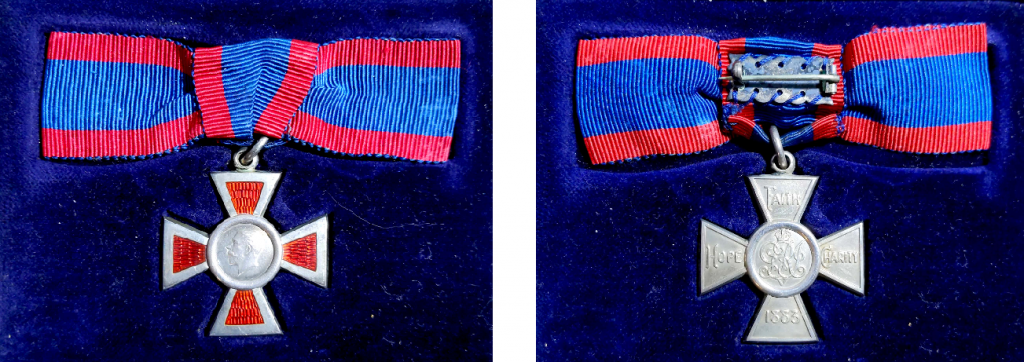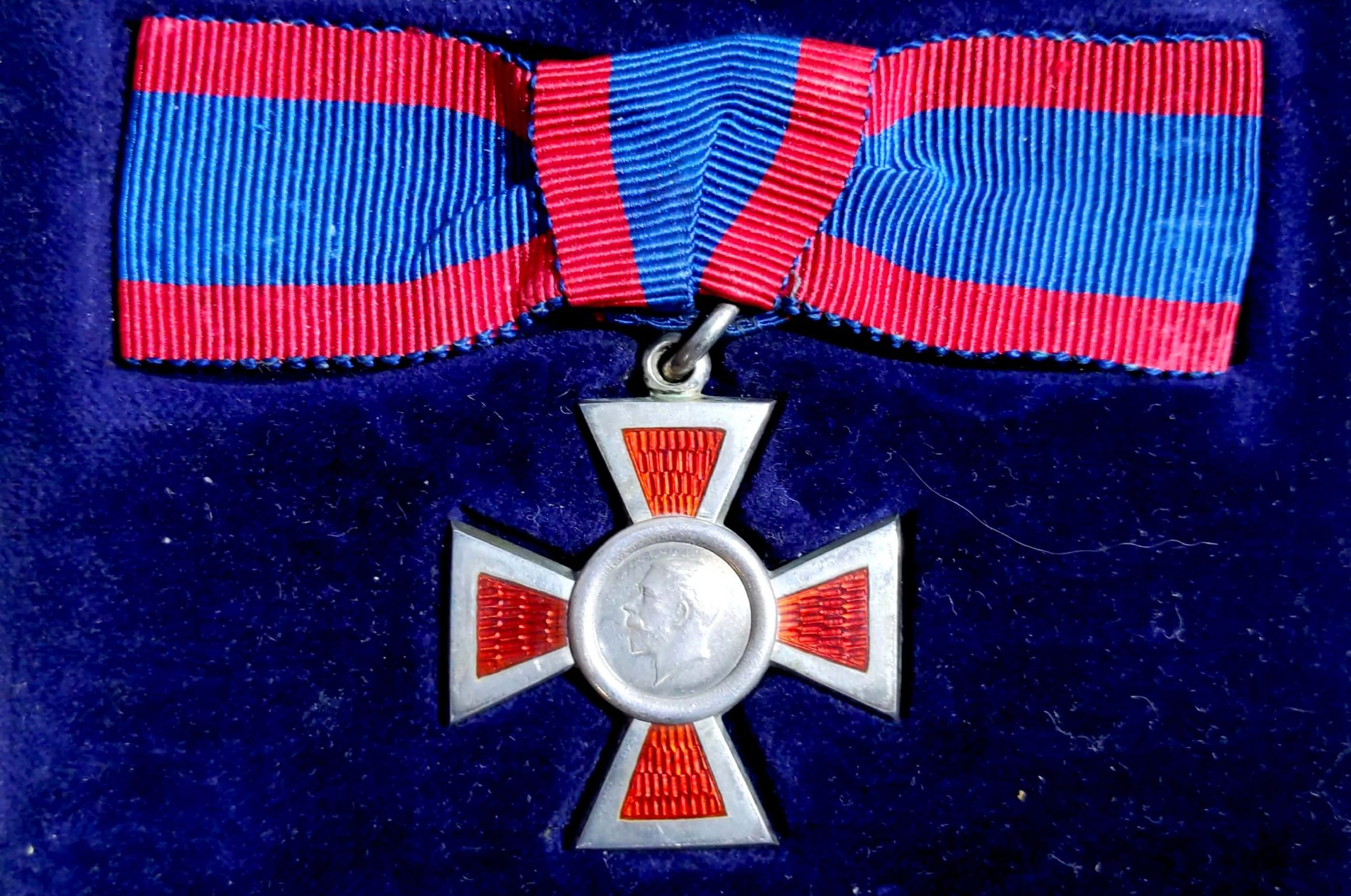
The award was established on 23 April 1883 by Queen Victoria, with a single class of Member and first awarded to the founder of modern nursing, Florence Nightingale. A second and lower class, Associate, was added during World War I in November 1915.
Associate (Second Class) ARRC
The award is made to a fully trained nurse or assistant nurse, probationer, or V.A.D. (Voluntary Aid Detachment) nursing member, who, belonging to one of the officially recognized nursing services, has shown special devotion and competency in the performance of nursing duties, over a continuous and long period, or who has performed some very exceptional act of bravery and devotion at her post of duty. Up to five percent of the total establishment of nurses could receive the ARRC. Associates can be elevated to Member as vacancies arise.
The Royal Red Cross badge is in the shape of a Maltese cross with a circular medallion at its centre with a bareheaded effigy of the monarch at its centre. The reverse is plain metal bearing the royal cypher of the reigning monarch, with the words “Faith” (top), “Hope” (left) and “Charity” (right) inscribed on the upper three arms of the cross, with the year “1883” in the bottom arm. The blue ribbon is one inch wide, with red edge stripes.
Recipients of the Royal Red Cross are entitled to use the post-nominal letters “RRC” or “ARRC” for Members and Associates respectively. Click HERE for a list of the Nursing Sisters who were awarded the Royal Red Cross, both First Class and Second Class, as well as those who received other awards
Read more about the Royal Red Cross Class 1 the Royal HERE and Class 2 HERE.
